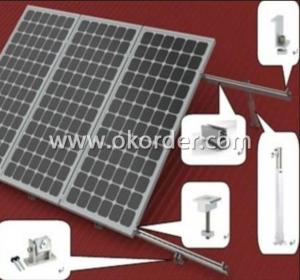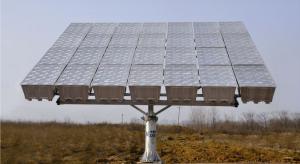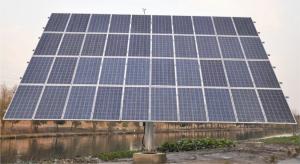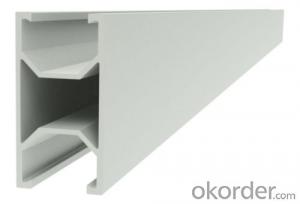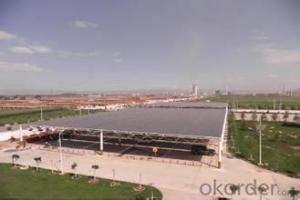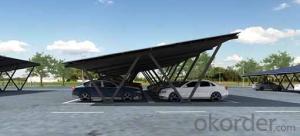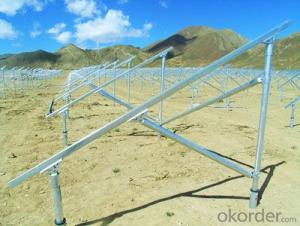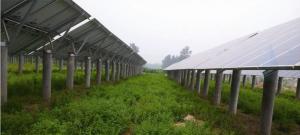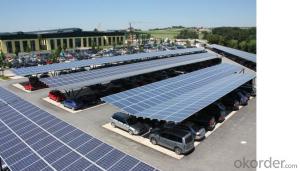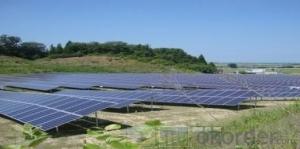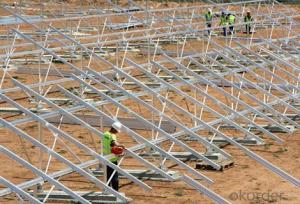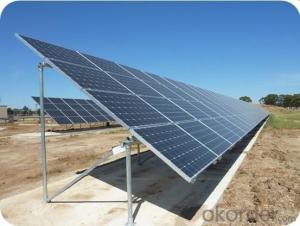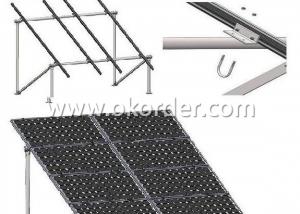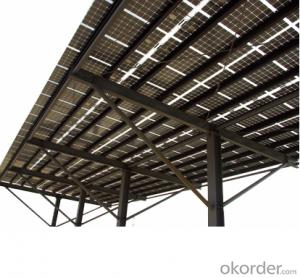Carport B1 Solar Mounting System from Italy Supplier
- Loading Port:
- China Main Port
- Payment Terms:
- TT OR LC
- Min Order Qty:
- -
- Supply Capability:
- -
OKorder Service Pledge
OKorder Financial Service
You Might Also Like
Carport
Unser Carport System Park@Sol basiert auf der konsequenten Weiterentwicklung der Schletter-FS-Freiland-Montagesysteme, mit denen bereits viele Projekte im Bereich von mehreren hundert MW realisiert wurden. Besondere Erfahrungen bestehen hier nicht nur im Bereich der individuellen statischen Optimierung für unterschiedlichste regionale Schnee- und Windverhältnisse, sondern auch in der Befestigung beliebiger Modulbauarten. Wir konstruieren, planen und fertigen individuell geplante Carports schon ab einem Stellplatz.
Das kostengünstige modulare Carportsystem
Der Stahl Carport eignet sich auch hervorragend als Solartankstelle für Elektroautos und E-Bikes.
Er kann als Einzelcarport oder als Reihencarport in unbegrenzter Größe ausgeführt werden.
Der Stahl Carport lässt sich gleichermaßen gut als Überdachung bestehender wie auch neuer Stellplätze realisieren.
- Q: Can a solar mounting system be used with solar-powered RVs?
- Yes, a solar mounting system can be used with solar-powered RVs. A solar mounting system provides a secure and efficient way to install solar panels on the roof of an RV, allowing for the harnessing of solar energy to power various appliances and systems within the vehicle.
- Q: Can a solar mounting system be used in areas with solar incentives for research institutions?
- Yes, a solar mounting system can definitely be used in areas with solar incentives for research institutions. In fact, research institutions can greatly benefit from installing solar panels with the help of a mounting system as it enables them to generate clean and renewable energy, reduce their electricity costs, and potentially earn incentives or credits through the local solar incentive programs.
- Q: Are there any specific requirements for seismic bracing when using a solar mounting system in seismic areas?
- Yes, there are specific requirements for seismic bracing when using a solar mounting system in seismic areas. These requirements are typically defined by local building codes and regulations. Seismic bracing is essential to ensure the structural integrity and stability of the solar mounting system during seismic events. It helps to prevent the system from collapsing or getting damaged during earthquakes or other ground movements. Compliance with these requirements is crucial to ensure the safety and reliability of the solar installation in seismic areas.
- Q: Can solar mounting systems be installed on buildings with limited roof weight capacity?
- Yes, solar mounting systems can be installed on buildings with limited roof weight capacity. There are lightweight and low-profile solar mounting systems available in the market that are specifically designed to minimize the added load on the roof. These systems distribute the weight of the solar panels evenly and make use of innovative installation techniques to ensure the structural integrity of the building is maintained. Additionally, a structural engineering analysis can be conducted to determine the maximum weight capacity of the roof and design a solar mounting system that complies with these requirements.
- Q: Can solar mounting systems be installed on buildings with multiple angles or shapes?
- Yes, solar mounting systems can be installed on buildings with multiple angles or shapes. There are various types of mounting systems available that can be customized to fit the specific requirements and architectural design of the building. These systems are designed to adapt to different angles and shapes, allowing for efficient installation of solar panels on diverse building structures.
- Q: Are there any specific requirements for installing a solar mounting system on a metal roof?
- Yes, there are specific requirements for installing a solar mounting system on a metal roof. These requirements may vary depending on the type of metal roof, but generally, they include ensuring the roof is structurally sound and capable of supporting the additional weight of the solar panels. The mounting system should be compatible with the roof's material and design, and proper flashing and waterproofing techniques should be used to prevent leaks and maintain the roof's integrity. Additionally, it's important to follow local building codes and obtain any necessary permits for the installation.
- Q: Can a solar mounting system be used for both residential and commercial applications?
- Yes, a solar mounting system can be used for both residential and commercial applications.
- Q: Is the template and stent two or one?
- The requirements of the stent support: stable, will not be displaced due to pouring and vibrating, bearing capacity, can support the weight of the board after pouring, and demolition of all the pouring parts on the load, safe, will not collapse, or fall Wounding.
- Q: How do you secure a solar mounting system to the ground?
- A common method to secure a solar mounting system to the ground is by using ground mounts or ballasts. Ground mounts involve anchoring the system to the ground using posts or poles, which are typically buried or cemented into the soil. On the other hand, ballasts are heavy weights placed on the mounting system to provide stability and prevent it from tipping over. These weights can be concrete blocks, gravel, or even specialized ballast trays. Both methods ensure that the solar mounting system remains securely fixed to the ground, even during harsh weather conditions.
- Q: Can a solar mounting system be used on floating platforms?
- Yes, a solar mounting system can be used on floating platforms. Floating solar systems, also known as floating photovoltaic (FPV) systems, utilize specially designed mounting structures that can be secured to floating platforms such as pontoons or rafts. These systems are typically used on bodies of water like lakes, reservoirs, or ponds, providing an efficient and innovative way to harness solar energy.
Send your message to us
Carport B1 Solar Mounting System from Italy Supplier
- Loading Port:
- China Main Port
- Payment Terms:
- TT OR LC
- Min Order Qty:
- -
- Supply Capability:
- -
OKorder Service Pledge
OKorder Financial Service
Similar products
Hot products
Hot Searches
Related keywords





